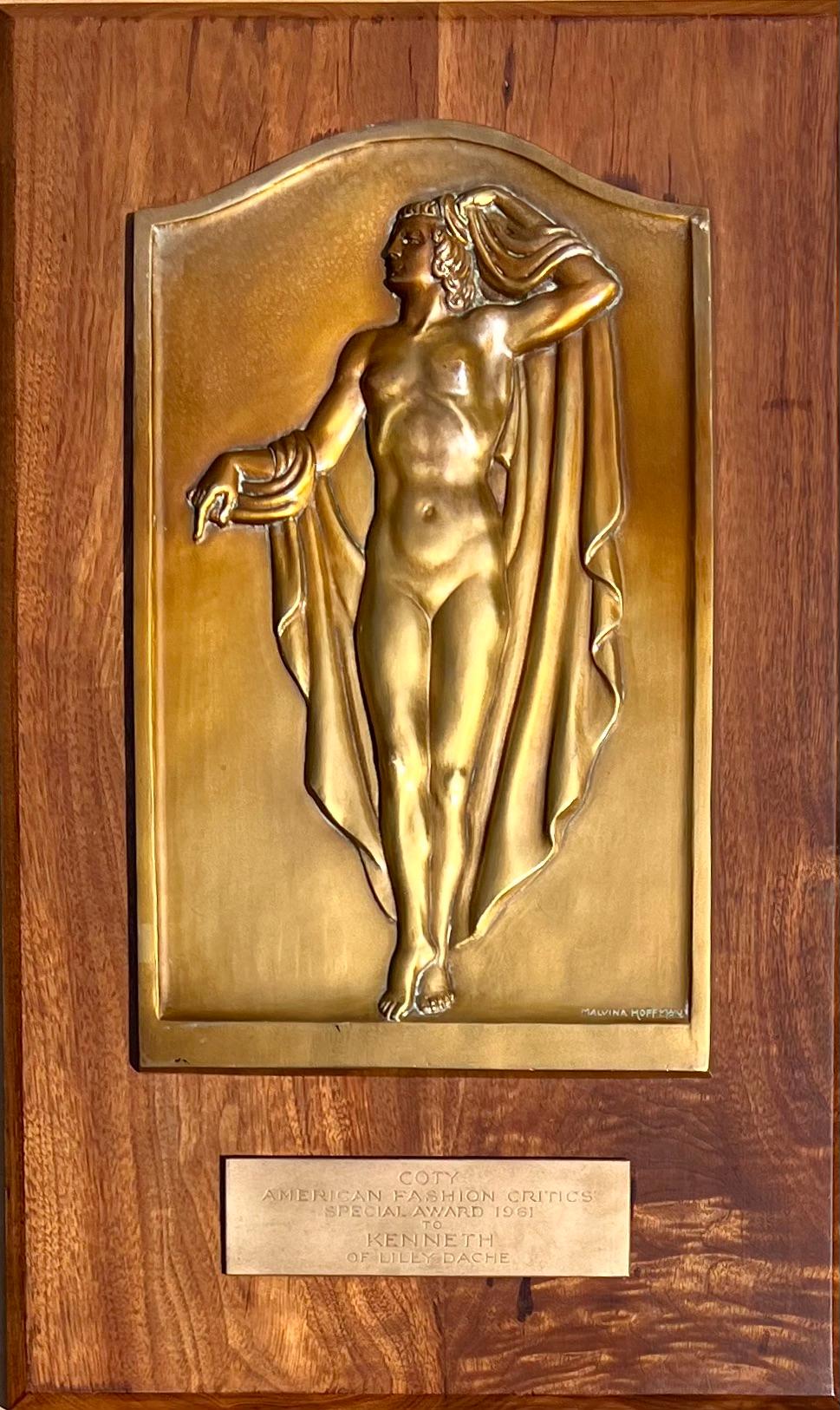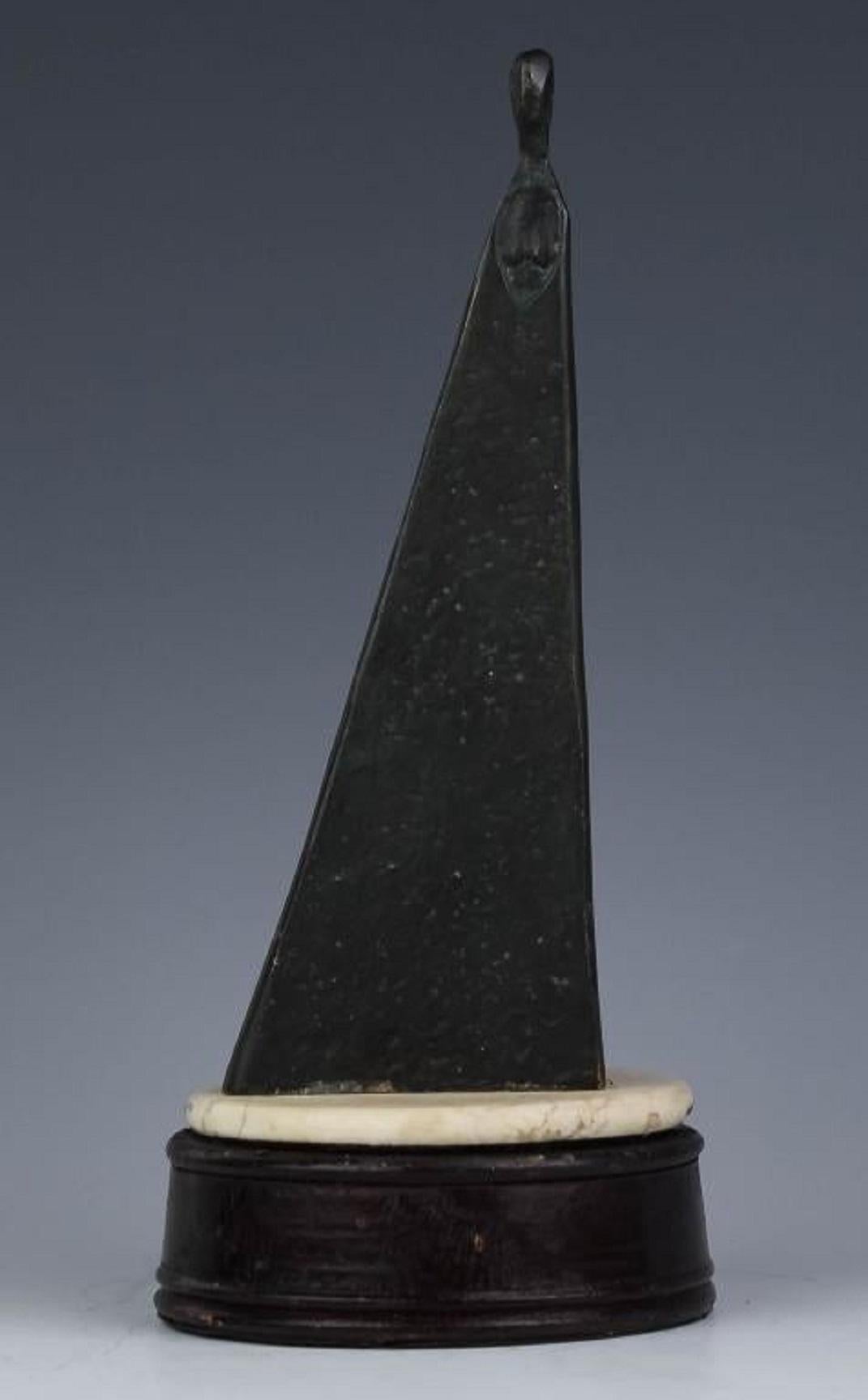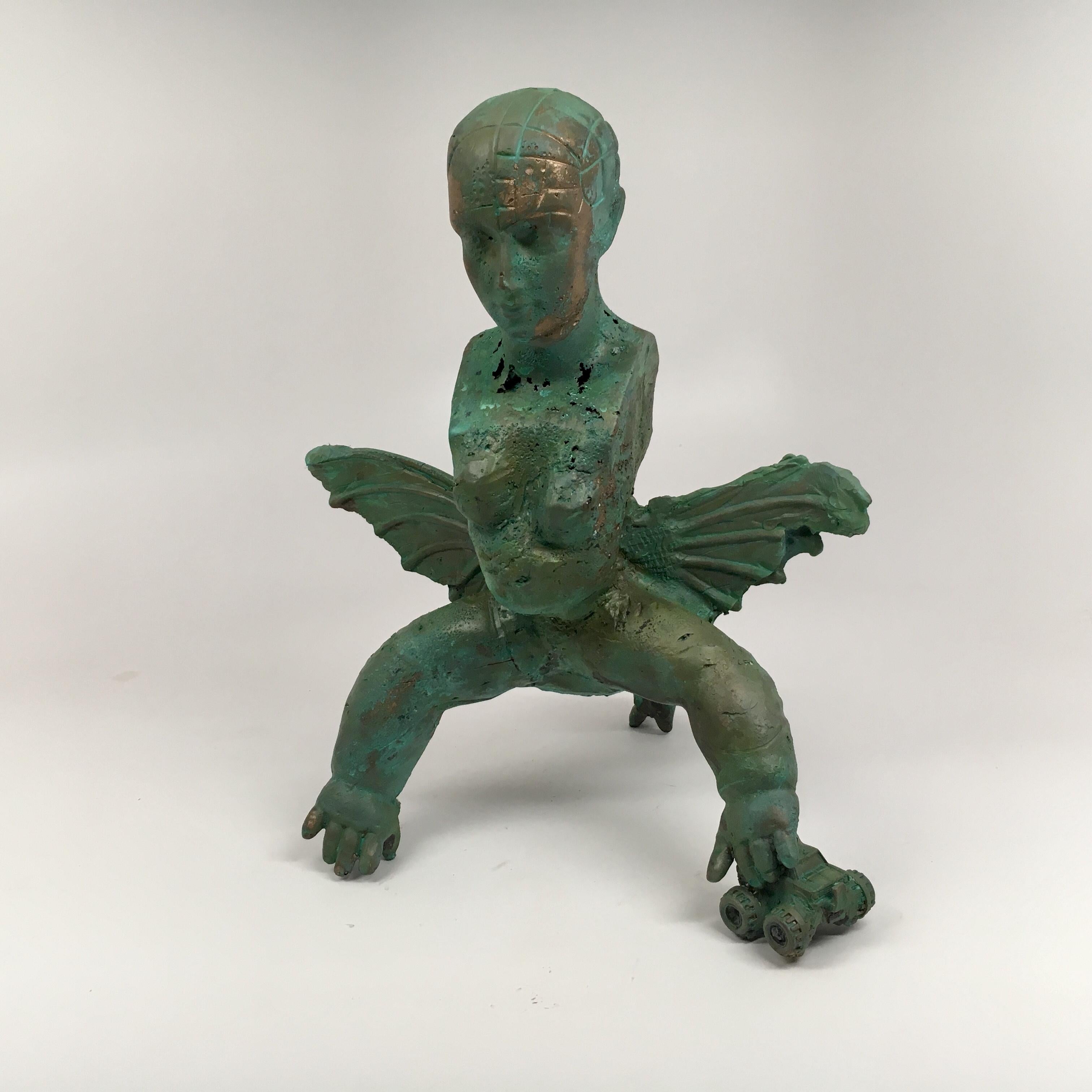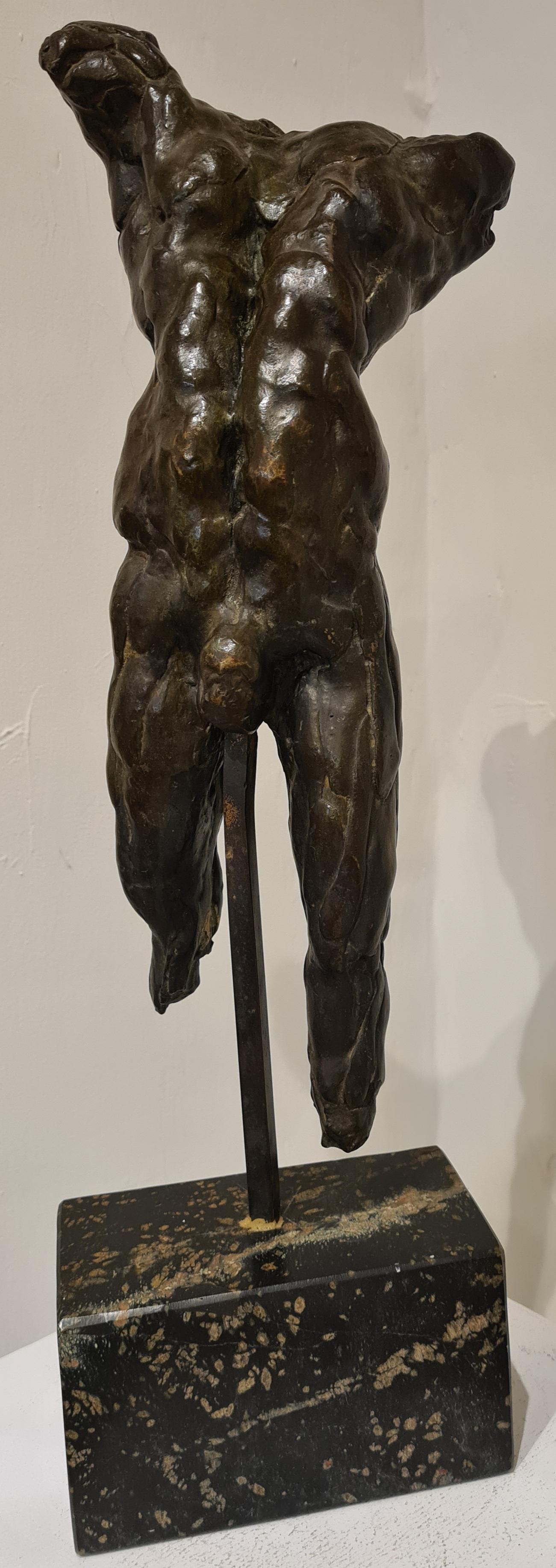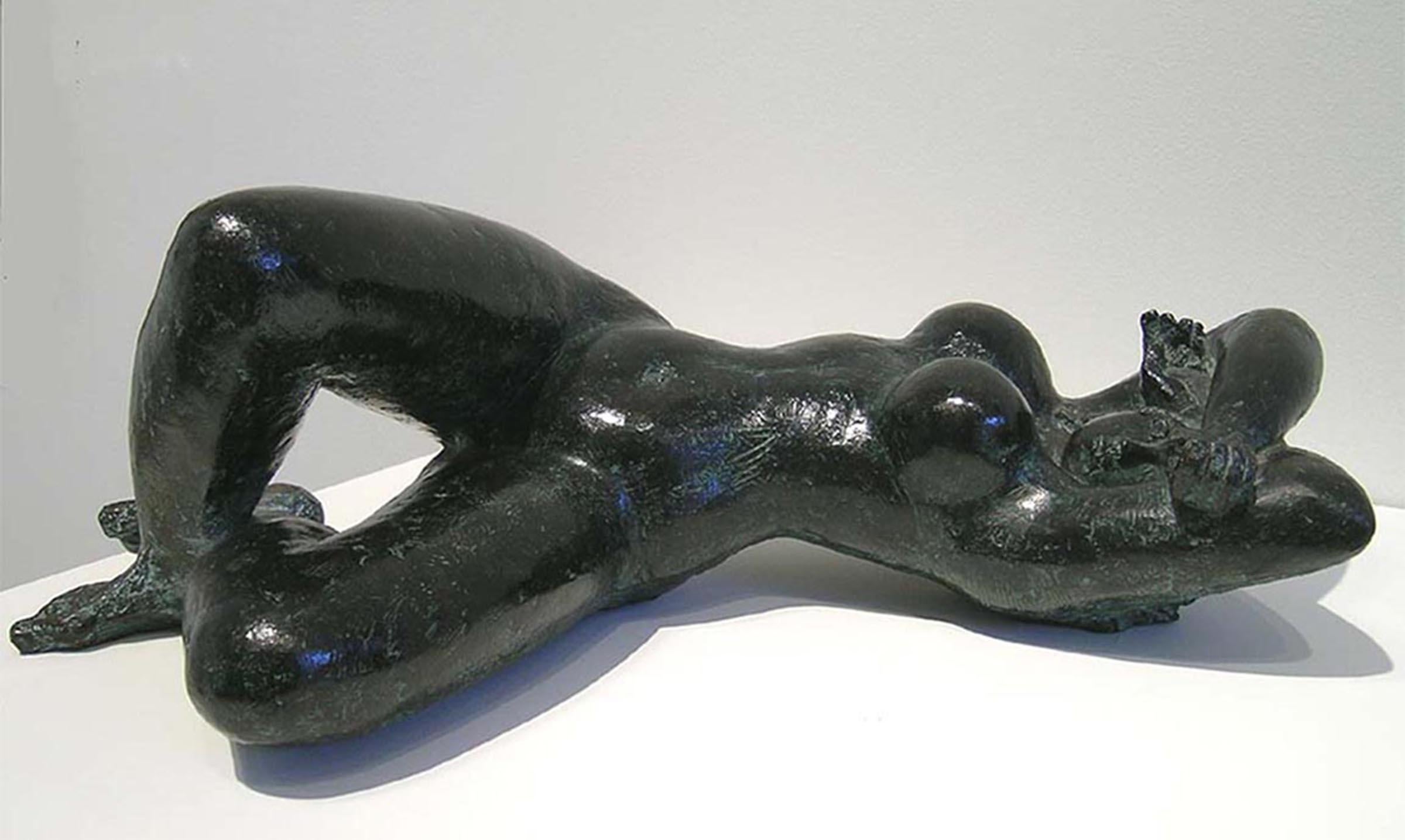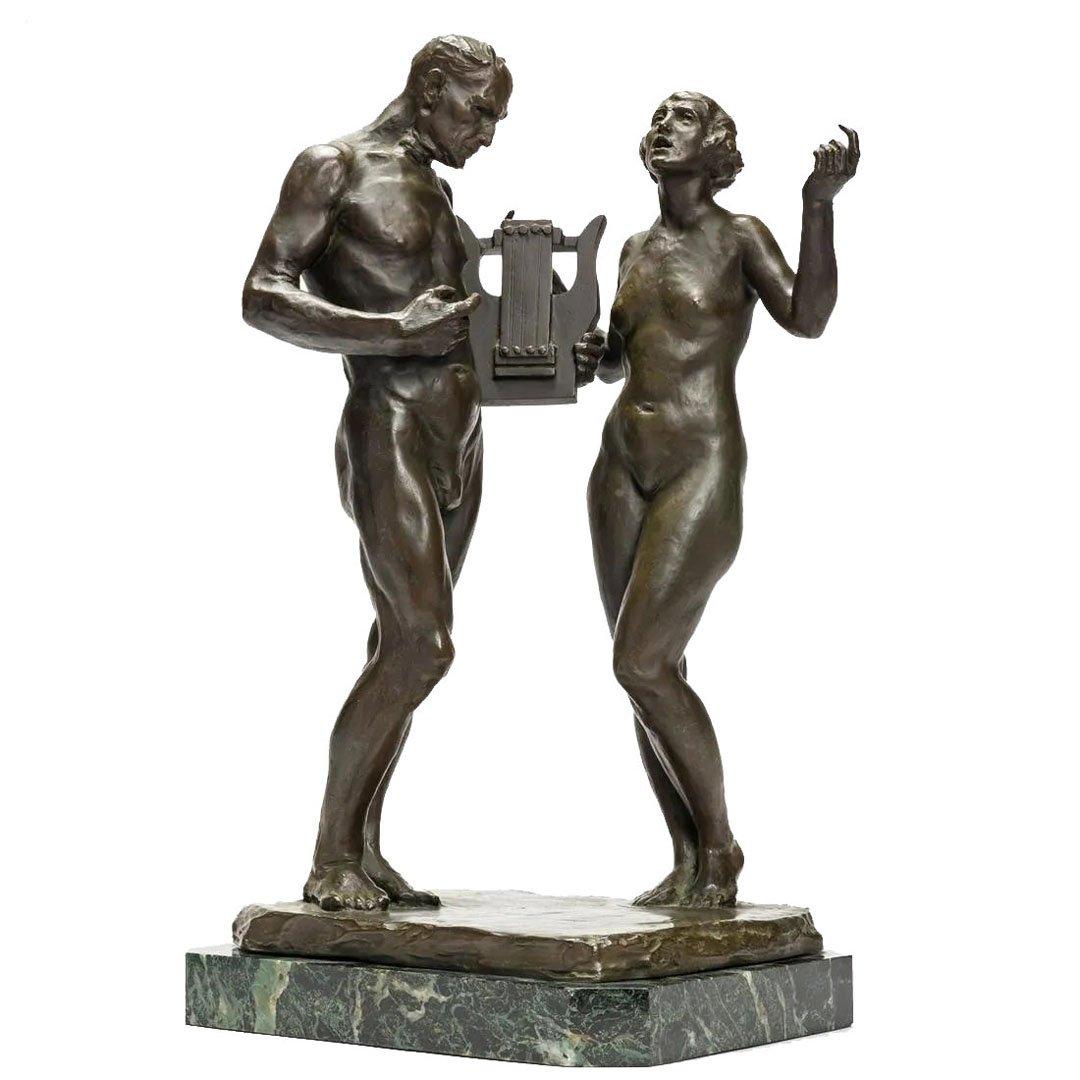David AdickesAbstract Modernist Armless Female Nude Torso Bust Bronze Sculpture2002
2002
About the Item
- Creator:David Adickes (1927, American)
- Creation Year:2002
- Dimensions:Height: 9 in (22.86 cm)Width: 3 in (7.62 cm)Depth: 3 in (7.62 cm)
- Medium:
- Movement & Style:
- Period:
- Condition:Wear consistent with age.
- Gallery Location:Houston, TX
- Reference Number:
David Adickes was born in Huntsville, Texas in 1927 and graduated from Huntsville High School in 1943. Nearing the end of World War II, at age 17, he joined the U.S. Air Force and regularly traveled to France. “I always liked art and was always drawing in the margins of my book,” Adickes said. “But being in Paris where there are galleries and museums on every corner — as just a small town kid from Huntsville, Texas — that was my turning point.” After completing his service, Adickes returned to Huntsville and earned his bachelor’s degree from Sam Houston State University. He then studied art with artist Fernand Leger in France for two years before moving to Houston to open his own art school.
(Biography provided by Reeves Antiques)
- ShippingRetrieving quote...Ships From: Houston, TX
- Return PolicyA return for this item may be initiated within 7 days of delivery.
- "The Messenger" Gradient Bronze Mythical Sculpture 5 of 10By Gil BruvelLocated in Houston, TXMythical bronze sculpture of a fairy nude with ram horns. The bronze is two-toned. The fairy stands on a bronze geometric shaped pedestal. T...Category
Late 20th Century Naturalistic Figurative Sculptures
MaterialsBronze
- Neoclassical Cupid Holding Fish Patinaed Bronze Fountain SculptureLocated in Houston, TXBronze fountain sculpture of Cupid hold a fish. This beautiful bronze sculpture features intricate details and has a nice natural patina.Category
Mid-20th Century Academic Figurative Sculptures
MaterialsBronze
- 20th Century Foumban Cameroon Bronze African SculptureLocated in Houston, TXWonderful 20th Century Bronze African Sculpture of a warrior on a donkey from Foumban in Cameroon.Category
20th Century Tribal Figurative Sculptures
MaterialsBronze
- Naturalistic Woman Holding a Calf SculptureLocated in Houston, TXNaturalistic sculpture of a woman standing and holding a small calf. The sculpture is signed "Happy Birthday 1976" and "W. R. Stevenson" on one side of the base. Artist Biography: William Robert Stevenson was born in 20 May 1925 in Eugene, Oregon. His family moved to Minneapolis, MN but he promptly returned to Oregon and Washington during the Great Depression to work in the Works Progress Administration (WPA). Hoping to study Art, his future was sidetracked when he was drafted into the United States Army at age 17 years old in early 1942. Being a strong swimmer, and having worked at stables as a child, he initially served in the last US Cavalry Corps, and also as a Swimming Instructor for the United States Army. Upon the abolition of the Cavalry Corps, he was trained as a Gunnar and Tank Commander for the M-4 Sherman Tank under General Patton...Category
20th Century Naturalistic Nude Sculptures
MaterialsPlaster, Clay
- Figurative Grey Stone Sculpture of a FemaleBy Jose ZacariasLocated in Houston, TXFigurative sculpture of a nude female figure. The stone is a grey tone with speckling. The artist signed and dated the piece in the crevice on the bottom. Jose Zacarias is known for ...Category
1980s Abstract Impressionist Figurative Sculptures
MaterialsStone
- Modern Bronze Abstract Skeletal Lion Animal SculptureLocated in Houston, TXModern bronze sculpture of a skeletal lion resting on a slab of black polished granite. Beautiful patina on the bronze that accentuates the intricate details.Category
20th Century Modern Figurative Sculptures
MaterialsGranite, Bronze
- 1961 Coty Award Plaque Kenneth Hairdresser Jacqueline Onassis Bronze FashionLocated in New York, NY1961 Coty Award Plaque Kenneth Hairdresser Jacqueline Onassis Bronze Fashion Bronze on wood. The wood plaque measures 12 3/4" by 20 3/4 inches. The bronze plaque itself is 13 3/4 x 8 3/4 inches and the the bronze inscription, which reads "COTY, American Fashion Critics Special Award 1961 to KENNETH of LILY DACHE...Category
1960s American Modern Figurative Sculptures
MaterialsBronze
- Sydney Kumalo Bronze Minimalist African Modernist Sculpture Figural Female NudeLocated in Surfside, FLSydney Kumalo. Features a bronze stylized female figural form sculpture fixed to a marble plinth and wood base. Bears signature on base. Measures 9 1/2...Category
20th Century Modern Figurative Sculptures
MaterialsMarble, Bronze
- Modern Bronze Relic Sculpture of figure with 3 legs: 'Rhoman Fertility Goddess'By Joshua GoodeLocated in New York, NYInspired by amateur archaeologists such as Heinrich Schliemann who discovered Troy and by past elaborate hoaxes like that of the Piltdown Man, Joshua travels the world performing sta...Category
2010s American Modern Figurative Sculptures
MaterialsBronze
- Mid Century Nude Male Acephale Sculpture in BronzeLocated in Cotignac, FRFrench Mid 20th Century bronze figure of a man presented on an iron 'tige' and marble base. The sculpture is not signed but was purchased from Nice, France, in the 1970s as a work b...Category
Mid-20th Century Modern Nude Sculptures
MaterialsMarble, Bronze, Iron
- RECLINGING WOMANBy Antoniucci VoltiLocated in Los Angeles, CAANTONIUCCI VOLTI "RECLINGING WOMAN" BRONZE, SIGNED, NUMBERED 2/6 VALSUANI FOUNDRY ITALiAN, WORKED IN PARIS, C.1960 6.5 X 18.5 X 10.5 INCHES Antoniucci Volti 1915-1989 Sculptor, painter, and printmaker Antoniucci Volti was born in Albano, Italy, in 1915. His family lived in Italy until 1920 when the family moved to France. Volti studied at the Ecole des Arts Décoratifs in Nice from 1928 to 1920. By 1932 the young artist had won a gold medal for two polychrome bas-reliefs before going to Paris, where he entered the studio of Jean Boucher at the Ecole Nationale des Beaux-Arts in Paris at the age of only fifteen. After serving in the Second World War, when he was interned as a prisoner of war in Bavaria, he returned in poor health to Paris, only to find his studio destroyed. From 1947 he showed work at various Paris Salons and, in 1954 and 1955 at the Brussels and Antwerp Biennales. In 1957 a retrospective of his work was organized at the Museum Rodin in Paris. He died in Paris in 1989 Works by Volti are in leading museums such as the Musée National d'Art Moderne, Paris. Antoniucci Volti is one of the most important Late Modern...Category
1960s Modern Nude Sculptures
MaterialsBronze
- Harmony, 20th century bronze & green marble base, nude man and woman with lyreBy Max KalishLocated in Beachwood, OHMax Kalish (American, 1891-1945) Harmony, c. 1930 Bronze with green marble base Incised signature on right upper side of base 14 x 9 x 5 inches, excluding base 17 x 10 x 8 inches, including base Born in Poland March 1, 1891, figurative sculptor Max Kalish came to the United States in 1894, his family settling in Ohio. A talented youth, Kalish enrolled at the Cleveland Institute of Art as a fifteen-year-old, receiving a first-place award for modeling the figure during studies with Herman Matzen. Kalish went to New York City following graduation, studying with Isidore Konti...Category
1930s American Modern Figurative Sculptures
MaterialsMarble, Bronze
